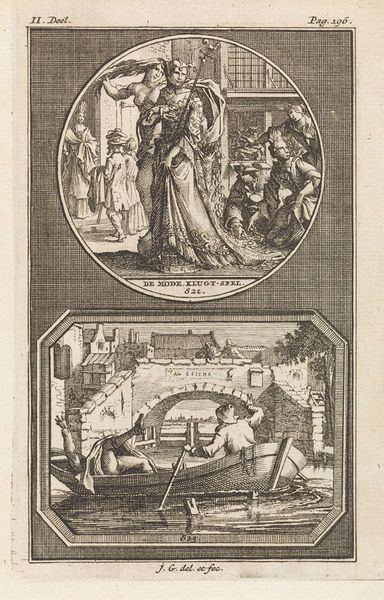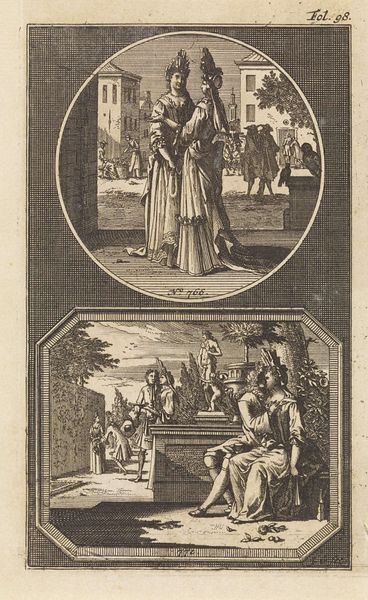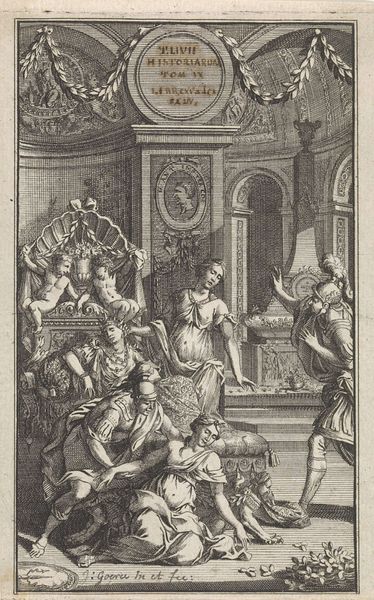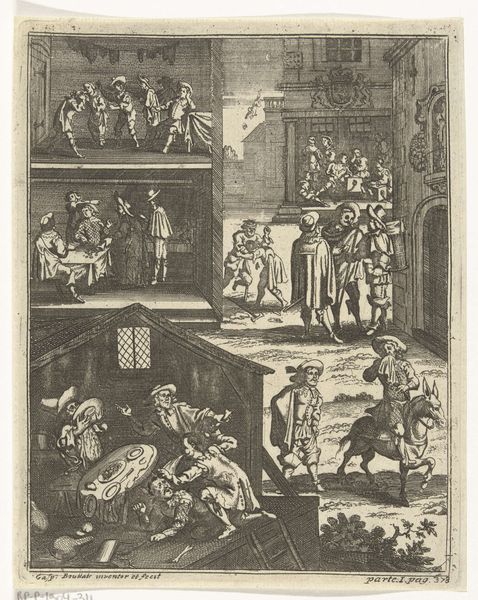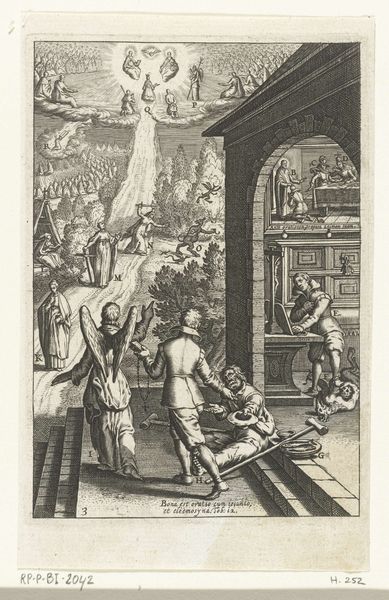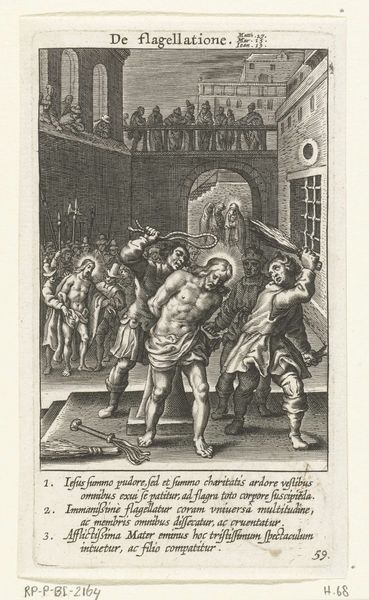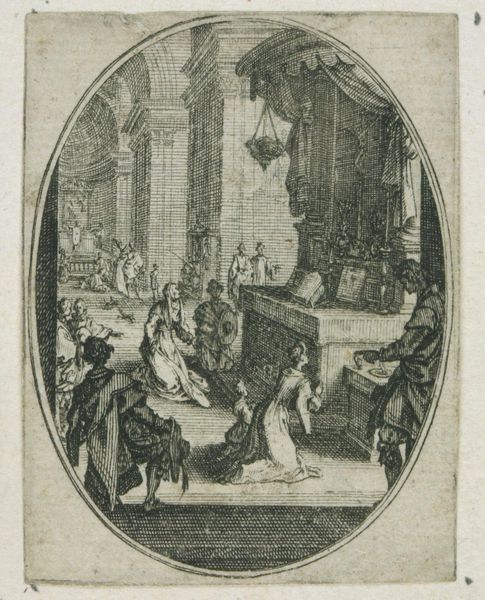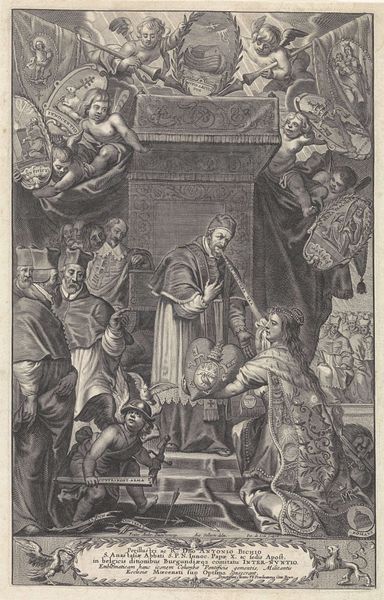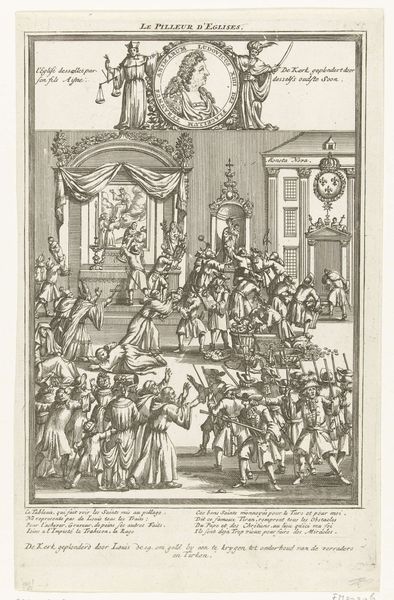
#
aged paper
#
mechanical pen drawing
#
old engraving style
#
sketch book
#
cartoon sketch
#
personal sketchbook
#
pen-ink sketch
#
sketchbook drawing
#
cartoon carciture
#
sketchbook art
Dimensions: width 91 mm, height 146 mm
Copyright: Rijks Museum: Open Domain
Curator: Look at this striking engraving. "Dronkenschap en zijn gevolgen," or "Intoxication and its Consequences," created in 1707 by Jan Goeree. It’s held here at the Rijksmuseum. The piece is divided into two distinct scenes. What are your initial thoughts? Editor: Well, first impression, it feels like a cautionary tale. There's a chaotic energy, particularly in the upper scene, figures are sort of sprawled and gesticulating wildly. The style, this detailed line work, gives it almost a moralizing weight, wouldn't you agree? Curator: Absolutely. Goeree, working in the Dutch Golden Age tradition, uses this sharp contrast to depict the slippery slope of intoxication. In the upper scene, within that circular frame, you see the supposed conviviality. The engraving clearly references classical compositions, with an organized messiness almost mimicking theater stage. Editor: But look at what that conviviality leads to, right? Below, the rectangular frame showcases what I assume are the "consequences": a street brawl, suggesting violence, perhaps even the disruption of public order. Notice the shadows. It all creates a really grim picture of where unchecked indulgence takes us. The socio-political ramifications seem intentional. Curator: Exactly. The placement of "Tom Primus" above the first scene and "Tom Secundus" above the second are visual cues—'volume one', then 'volume two' to emphasize a sequential narrative of cause and effect. This piece is from an illustrated book; prints like these were frequently used as a medium to propagate ideologies or moral teachings to a broad audience. Editor: It's clever how Goeree uses two distinct, framed vignettes to present these cause-and-effect relationships. It feels almost cinematic, a before-and-after story condensed into a single page. Are we to take it also as a kind of commentary about class or public space? The drunken excess happens indoors and then it spills onto the streets. Curator: Yes, the social implications of public behavior are most certainly part of Goeree's concern here. He, through this sketch, scrutinizes contemporary behavior. These aren’t just drunken mishaps; Goeree is implicitly engaging with anxieties about social decorum. Editor: Seeing this makes me reflect on what public service the artwork serves as a critique. Art as something that challenges social behavior—timeless and still applicable. Curator: Indeed. It offers us much insight into the social and cultural dynamics of its era, and some enduring human foibles.
Comments
No comments
Be the first to comment and join the conversation on the ultimate creative platform.
